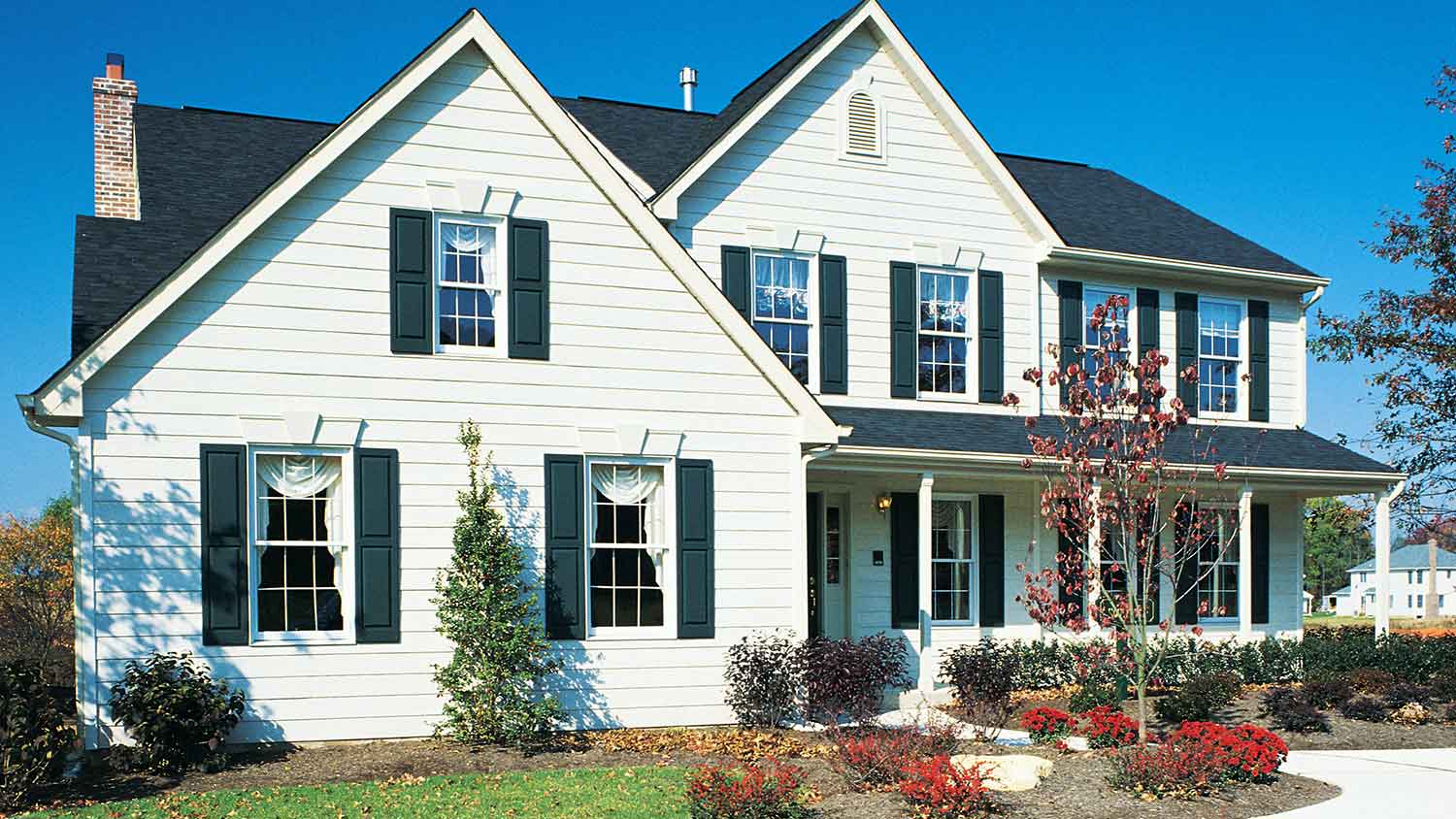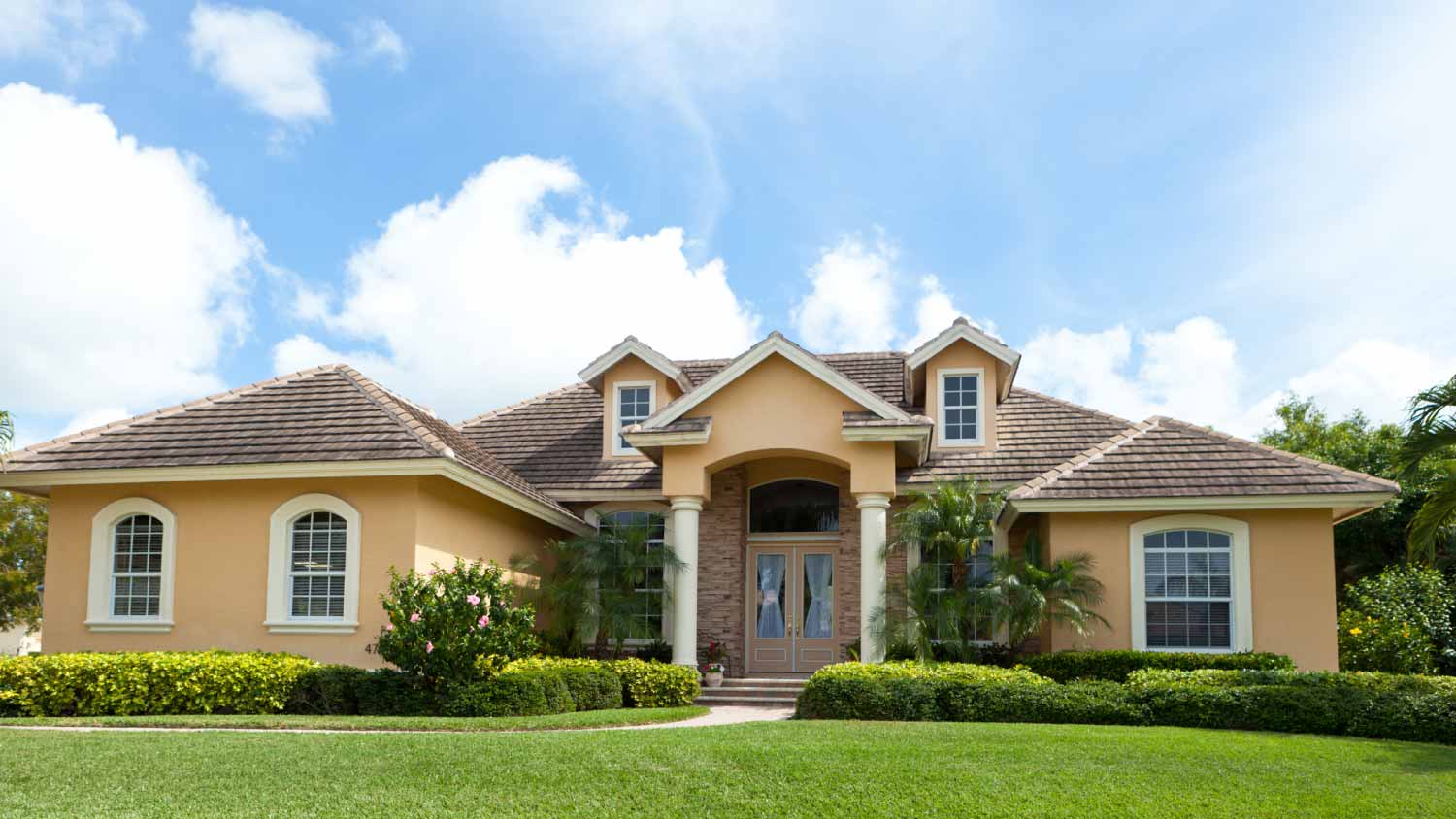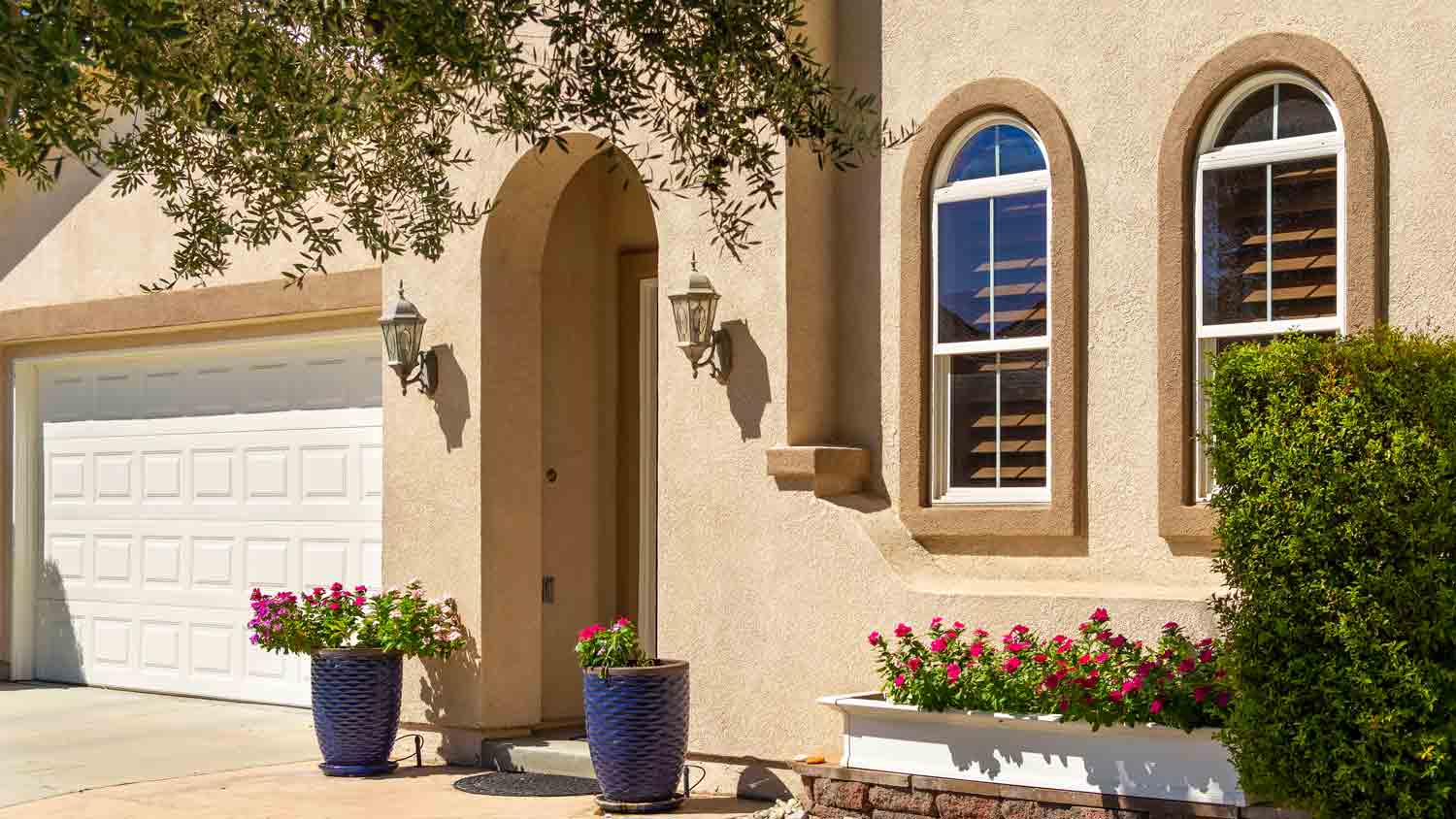
Get transparent stucco inspection cost info. Learn what impacts price, how to save, and what to expect before hiring a pro for your stucco inspection.
Stucco service costs depend on your project and location. Check with a local pro for your specific job.
Stucco repair restores cracks, holes, or water damage on exterior walls to prevent further deterioration.
The main cost factors include the type of repair, area size, materials, and local labor rates, with rates often ranging from $8 to $50 per square foot.
Investing in timely stucco repair protects your home’s structure and can offer a strong return on investment by preserving curb appeal.
A professional repair ensures a long-lasting, weather-resistant finish and helps maintain your property value.
Regular cleaning and inspections help spot minor issues early, reducing the risk of expensive repairs in the future.
This article was created using automation technology and thoroughly fact-checked and edited by an Angi Editor in accordance with our AI policy.
Stucco repair cost is a key concern for homeowners facing cracks, holes, or water damage on their exterior walls. Most stucco repairs cost between $600 to $2,662, with an average of $1,629. Minor repairs may cost as little as $250, while extensive restoration can reach $6,900 or more. Expect to pay $8 to $50 per square foot, depending on the repair type and materials.
Addressing stucco issues promptly helps prevent larger structural problems and keeps your home looking its best. This guide walks you through what impacts stucco repair cost and how to budget wisely for your project.
A few major factors will influence your stucco repair cost. Here’s what to consider when budgeting for your project.
The type of stucco repair needed is one of the biggest drivers of overall cost. Repairs can range from simple crack fixes to complete resurfacing, each with unique labor and material needs.
| Repair Type | Description | Cost Range |
|---|---|---|
| Crack repair | Fills and seals hairline or larger cracks | $250–$800 |
| Hole or puncture repair | Patching small to medium holes | $300–$900 |
| Water damage repair | Removes damaged stucco and fixes moisture issues | $1,000–$3,000 |
| Buckling repair | Addresses bulging or separated stucco areas | $800–$2,500 |
| Full resurfacing | Applies new stucco layer over large areas | $3,000–$8,000 |
Stucco comes in two main types: traditional cement-based and synthetic (EIFS, or Exterior Insulation and Finish System). The type of stucco affects repair complexity, cost, and appearance.
| Stucco Type | Description | Cost Range (Per Sq. Ft.) |
|---|---|---|
| Traditional | Cement, sand, lime; durable and hard | $8–$30 |
| Synthetic (EIFS) | Foam insulation with acrylic finish | $12–$50 |
Traditional stucco is durable and easier to patch, but matching texture and color can be tricky. Synthetic stucco offers better insulation but can be more expensive and complex to repair, especially if water damage is present. Each type has its own look and maintenance needs.
The brand or manufacturer of your stucco can impact repair costs, especially if you need to match existing materials. Some brands use proprietary formulas or finishes that cost more to repair or replace. If your home was finished with a less common brand, sourcing matching materials may require special orders, adding to the total cost. Popular brands tend to have broader availability, which can help keep costs lower.
The size of the damaged area is a straightforward factor in stucco repair cost. Repairs on small patches, such as a single crack or hole, are less expensive than repairing large sections or entire walls.
| Repair Area Size (Sq. Ft.) | Description | Cost Range |
|---|---|---|
| 1–10 | Small patch or crack repair | $250–$900 |
| 11–50 | Medium area, multiple spots | $900–$2,500 |
| 51–200 | Full wall or major section | $2,500–$6,000 |
| 200+ | Entire home or large area | $6,000–$12,000 |
Larger repairs increase both labor and material costs, and may require scaffolding or special equipment.
Several material components go into stucco repair, including base coats, finish coats, mesh, sealants, and color additives. Higher-quality materials improve durability and appearance but come at a higher price.
| Material Type | Description | Cost Range |
|---|---|---|
| Base coat | Initial layer for adhesion | $10–$30 per bag |
| Finish coat | Final color/texture layer | $15–$50 per bag |
| Mesh/lath | Reinforces repair area | $0.50–$1.50 per sq. ft. |
| Sealants | Protects against water | $8–$20 per tube |
| Color additives | Custom color matching | $20–$50 per batch |
Matching the color and texture to your existing stucco can increase costs, especially for older or custom finishes.
If your stucco or previous repairs are still under warranty, you may be able to reduce or eliminate out-of-pocket repair costs. Manufacturer warranties often cover defects in the stucco itself, while installer warranties may include labor. Always check the fine print to see what’s covered. Purchasing an extended warranty for repairs can provide peace of mind but will add to your upfront cost.
Many stucco repair professionals offer maintenance plans, which can help you avoid major repairs by catching issues early. Plans often include regular inspections, cleaning, and small touch-ups. While there is a yearly or monthly fee, these plans can save money in the long run by preventing more expensive damage. Regular maintenance keeps your stucco looking fresh and extends its lifespan.
Stucco repairs are performed by general contractors or stucco specialists, with labor costs varying based on experience, region, and project size. Labor may be charged hourly, per square foot, or as a flat project fee. Rates range from $40 to $75 per hour or $8 to $50 per square foot, depending on complexity and location. Labor often accounts for at least half of the total stucco repair cost, with more intricate or high-up repairs costing more.
Where you live can affect your stucco repair cost. Urban areas with higher living costs see higher labor rates. Climate also matters: homes in wet or storm-prone regions may need more complex repairs and better materials. Hard-to-access locations, such as second-story walls or tight spaces, can raise labor costs due to increased setup and safety requirements. Material availability can also vary by region, affecting pricing.
Stucco repair projects may include add-ons such as painting, waterproofing, texture matching, and debris removal. Additional repairs, like fixing underlying water damage or insulation, can increase the total cost.
| Add-On Service | Description | Cost Range |
|---|---|---|
| Painting | Matches repaired area to existing walls | $200–$800 |
| Waterproofing | Prevents future moisture intrusion | $500–$2,000 |
| Texture matching | Ensures seamless repair appearance | $150–$600 |
| Debris removal | Cleans up after repair | $50–$200 |
| Structural repair | Fixes underlying wall or framing issues | $500–$5,000 |
| Permits/inspections | Required by local codes | $50–$300 |
Planning for related services ensures a finished look and lasting results.
Deciding between stucco repair and full replacement depends on several factors. Repair is preferable when damage is localized, the stucco is relatively new, or the underlying structure is sound. If your stucco is over twenty years old, has widespread damage, or previous repairs have failed, new stucco installation may be a better investment.
A common guideline is the 50% rule: if repair costs exceed 50% of the price for full replacement, it’s often wiser to replace all the stucco. Repairing is less expensive upfront—$500 to $2,000—while full replacement or re-stuccoing can cost $8,000 to $20,000 or more for an entire home.
Repair keeps costs lower and preserves curb appeal, but full replacement can improve insulation, energy efficiency, and long-term value. Weigh your options carefully, considering both immediate needs and future ROI.
DIY stucco repair can be a cost-saving option for minor cracks or small holes. Material costs for DIY repairs include stucco mix, mesh, sealant, and colorant, totaling $50 to $300, plus tools like trowels, buckets, and safety gear for another $50 to $150. The savings come from avoiding labor charges, but there are hidden risks.
DIYers need basic masonry skills, patience, and an eye for matching texture and color. Mistakes, such as poor blending or incomplete sealing, can lead to water leaks or visible patches that require professional correction. DIY is best for small, non-structural repairs.
Hiring a local stucco pro costs more—$8 to $50 per square foot—but ensures a durable, seamless finish and may include warranties. Complex repairs, water damage, or structural issues should always be handled by experienced professionals to protect your home’s value and safety.
There are several ways to keep your stucco repair project budget-friendly without sacrificing quality or safety. Taking these steps can help you save money:
Schedule repairs during off-peak seasons for better rates from contractors.
Get multiple quotes from licensed stucco professionals to compare pricing and services.
Address minor damage early to avoid larger, more expensive repairs down the road.
Choose standard materials and finishes for budget-friendly repairs without sacrificing durability.
Maintain stucco regularly with cleaning and inspections to catch issues before they escalate.
Bundle stucco repairs with other exterior projects, such as painting or siding, for potential discounts.
Check for warranty coverage from manufacturers or prior installers before paying out of pocket.
Home is the most important place on earth, which is why Angi has helped more than 150 million homeowners transform their houses into homes they adore. To help homeowners with their next project, Angi provides readers with the most accurate cost data and upholds strict editorial standards. We extensively research project costs to develop the pricing data you see, so you can make the best decisions for you and your home. We rely on reputable sources, including the U.S. Bureau of Labor Statistics, academic journals, market studies, and interviews with industry experts—all to ensure our prices reflect real-world projects.
Want to help us improve our cost data? Send us a recent project quote to [email protected]. Quotes and personal information will not be shared publicly.
From average costs to expert advice, get all the answers you need to get your job done.

Get transparent stucco inspection cost info. Learn what impacts price, how to save, and what to expect before hiring a pro for your stucco inspection.

Discover the cost to stucco a house in 2025, including average prices, key factors, and tips to help you budget and plan your stucco project with confidence.

Knowing how to measure for siding gives you a more accurate estimate for installation cost. Learn how to get measurements yourself in just a few steps.

Understand the signs of stucco damage and whether to repair vs. replace your stucco so you can make informed decisions for your home's exterior.

Wondering if stucco increases home value? The short answer is, yes, but the ROI you’ll see depends on a few factors, like location and installation costs.

Installing new stucco gives your home a facelift and boosts home value. But can you stucco over stucco? You can, but there are some things to consider.